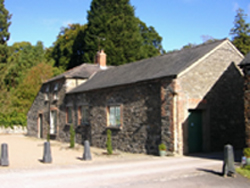|
|
|
| |
The name Clandeboye As a result of warfare and diplomacy,
although mostly the former the dynasty Nial founded waxed and waned
through the centuries, at various times controlling a considerable portion
of Ireland, even claiming the high kingship at one stage. In 1523 the
Earl of Kildare defeated Aodh Buidhe O'Neill of Clandeboye capturing
Belfast and Carrickfergus Castles.In 1602 Con O'Neill was arrested by
Hugh Montgomery a Scottish planter and held in Carrickfergus
Castle subsequent events led to the Flight
of the Earls, which The estate today is in the ownership of The Marchioness of Dufferin and Ava who's ancestors came into possession of it in 1674. It has a total area of 550 hectares (1,359 acres) of which 250 hectares are farmland with the remainder mature woodland. This is a mere fraction of its original size when it covered much of eastern county Down and parts of County Antrim. The present house was built in 1801 to the design of Robert Woodgate. Today Clandeboye Courtyard is the commercial centre of the estate, the buildings which date from the 18th century have been tastefully converted and are used to host private and corporate events. The gas house is of particular interest, built in baronial style, gas houses were to be found on many country estates, prior to the introduction of electricity. Standing high on a hill on the estate is Helen's Tower, this was completed in 1858 by Lord Dufferin, in memory of his mother. A replica of the tower was built at Thiepval on the Somme, as a memorial to soldiers of the Ulster Division many of which never saw their native land again. The Ulster Way crosses the estate from the Crawfordsburn Country Park and Helens Bay beach to the Somme Heritage Centre at Conlig. The path is five miles long and passes the Blackwood Golf Course and Helens Tower. Much of the path is along the original route laid out by James Frazer in 1850 linking Clandeboye House with Helens Bay railway station |
||||
Read
about Clandeboye
Courtyard. |
|



